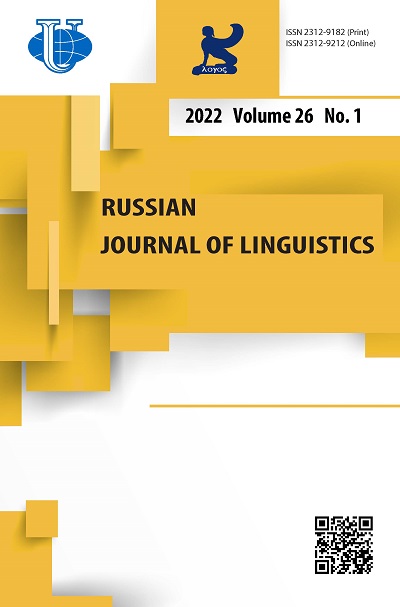Рецензия на книгу Koshelev, Alexey. 2020. On the Genesis of Thought and Language. Translated by Alexander Kravchenko with Jillian Smith. Moscow and Boston: Academic Studies Press
- Авторы: Гладкова А.1,2,3
-
Учреждения:
- Австралийский национальный университет
- Университет Монаш
- Высшая школа экономики
- Выпуск: Том 26, № 1 (2022)
- Страницы: 245-249
- Раздел: РЕЦЕНЗИИ
- URL: https://journals.rudn.ru/linguistics/article/view/30646
- DOI: https://doi.org/10.22363/2687-0088-30087
Цитировать
Полный текст
Аннотация
-
Об авторах
Анна Гладкова
Австралийский национальный университет; Университет Монаш; Высшая школа экономики
Автор, ответственный за переписку.
Email: angladkova@gmail.com
получила степень PhD по лингвистике в Австралийском национальном университете. Она преподавала лингвистику и прикладную лингвистику в Австралийском национальном университете, Университете Монаш и Университете Новой Англии (Австралия), а также в Сассекском университете и Университете Брайтона (Великобритания). HSE, 25/12 Bolshaya Pecherskaya St., Nizhny Novgorod 603155 Russia
Список литературы
- Berwick, Robert C. & Noam Chomsky. 2016. Why Only Us: Language and Evolution. Cambridge: MIT Press.
- Everett, Daniel. 2008. Don’t Sleep, There are Snakes: Life and Language in the Amazonian Jungle. N.Y.: Pantheon Books.
- Melčuk, Igor. 2016. Language: From Meaning to Text. Moscow: LRC & Boston: ASP.
- Pavio, Allan. 1971. Imagery and Verbal Processes. N.Y.: Holt, Rinehart & Winston.
- Pavio, Allan. 1973. Mental Representations. Oxford: Oxford University Press.
- Pinker, Stephen. 1997. How the Mind Works. N.Y.: W. W. Norton & Company.
- Wierzbicka, Anna. 1996. Semantics: Primes and Universals. Oxford: Oxford University Press.
- Wierzbicka, Anna. 2015. Innate conceptual primitives manifested in the languages of the world and in infant cognition. In Eric Margolis and Stephen Laurence (eds.), The Conceptual Mind: New Directions in the Study of Concepts, 379-412. Cambridge: MIT Press.

















